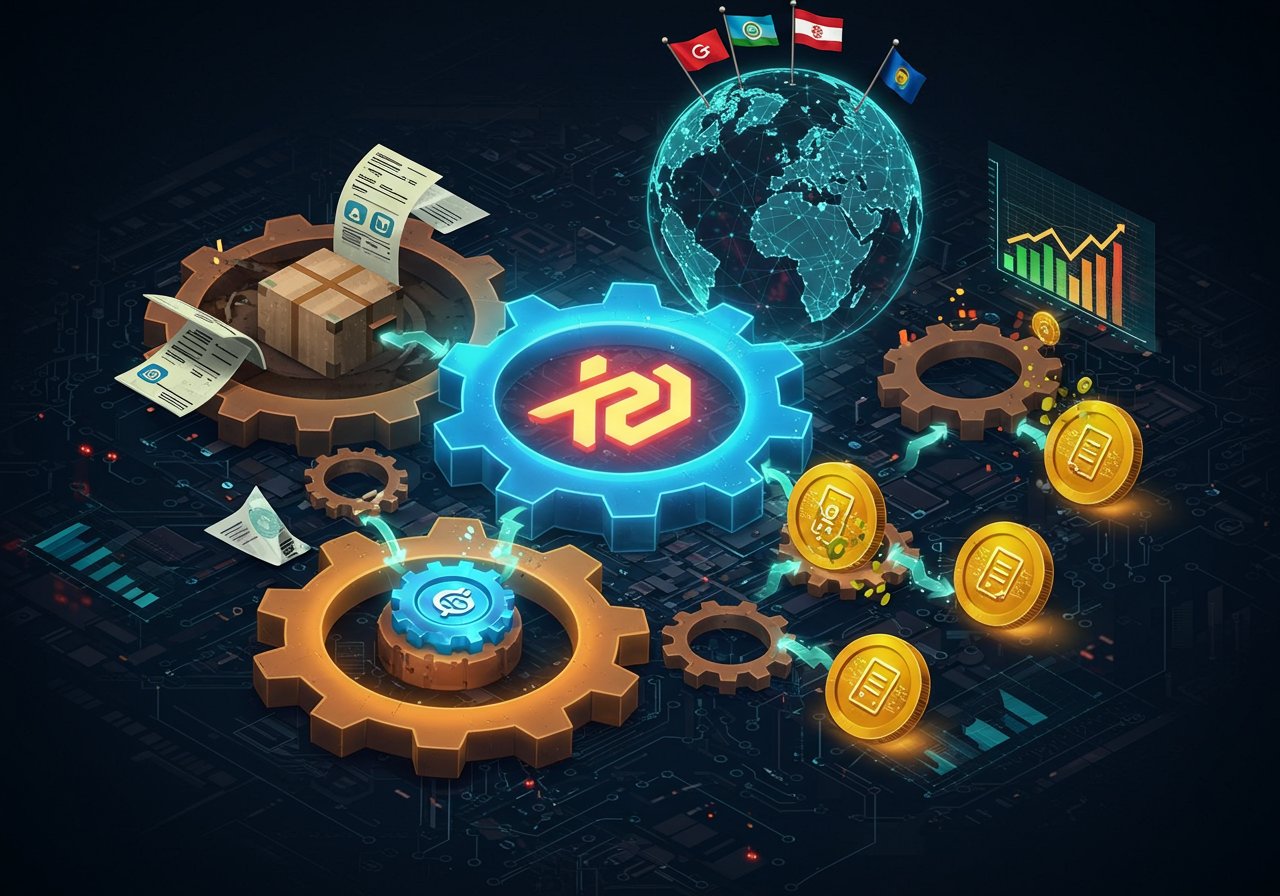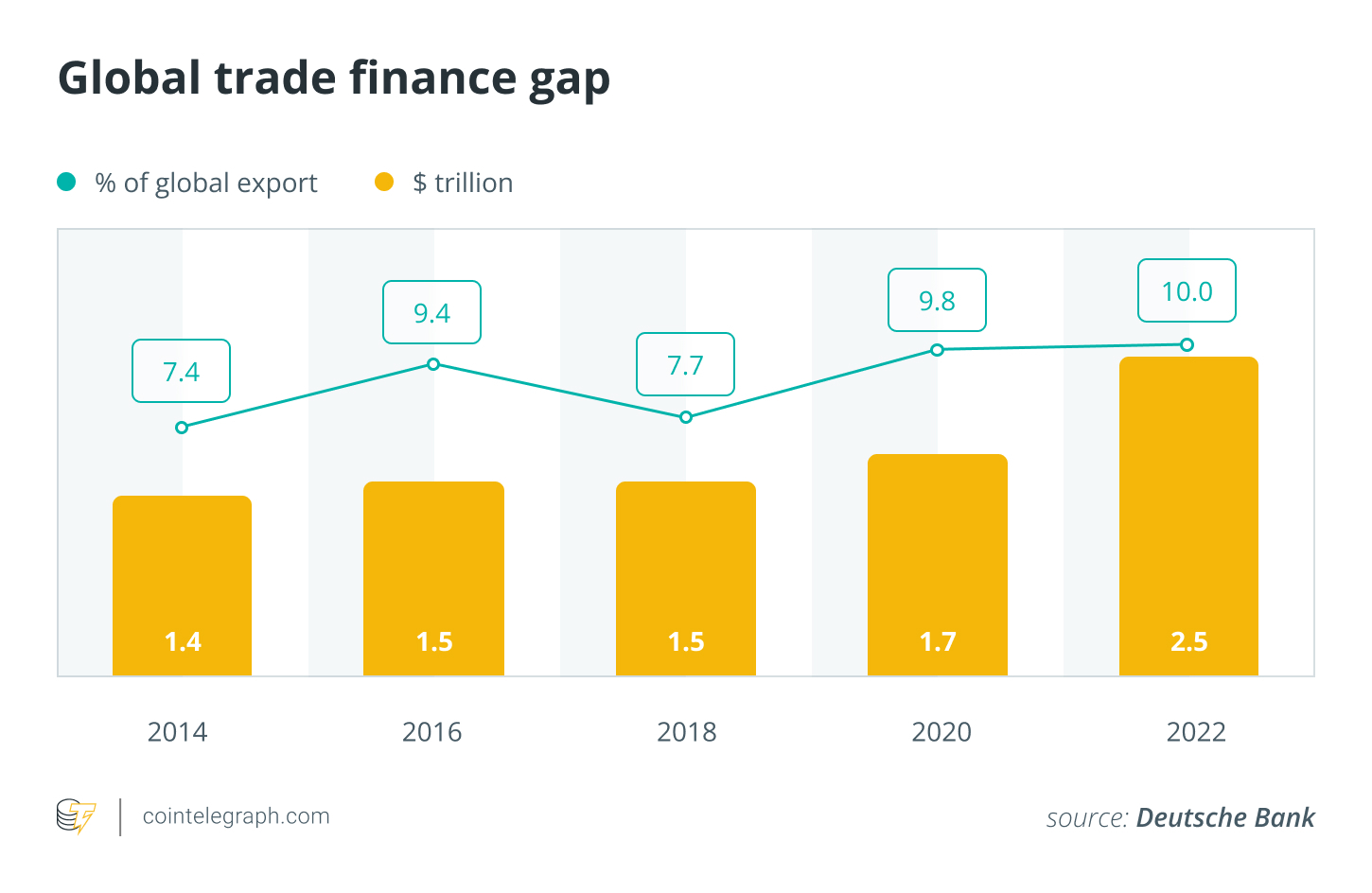
Trade Finance‘s Technological Backwards
The global trade finance arena, a staggering $30 trillion industry, often operates in the shadows. Despite the pervasive influence of technology in nearly every other sector, this vital engine of international commerce remains stubbornly tethered to antiquated practices. From the reliance on couriers and physical paperwork to the continued use of fax machines, the inefficiencies are glaring and costly. Small and medium-sized enterprises (SMEs), the lifeblood of many economies, are disproportionately affected, frequently facing funding denials due to fragmented and outdated infrastructure. This technological lag translates into a significant trade finance gap, currently estimated at $2.5 trillion, limiting growth and participation in global supply chains.

The Blockchain Solution: A Digital Overhaul
The question, then, becomes: Can blockchain provide a remedy? Cointelegraph Research’s latest analysis delves into the growing interest among institutions and governments exploring blockchain‘s potential. A notable contender in this space is the XDC Network, a hybrid blockchain platform designed specifically for enterprise-level applications like trade finance. XDC’s unique architecture allows for seamless integration with both public and private systems, facilitating transparency where needed while maintaining privacy where it is critical. Furthermore, the platform is ISO 20022-compliant, ensuring compatibility with the established messaging standards employed by global financial institutions.

XDC Network: A Practical Approach
The XDC Network is positioning itself not to uproot the existing trade finance ecosystem, but rather to seamlessly retrofit its antiquated backend with programmable infrastructure. The core of XDC’s strategy centers around facilitating the digital issuance of assets, automating processes, and expanding access to capital without demanding that institutions overhaul their established workflows. This practical approach has yielded tangible results. In Latin America, for example, SMEs have successfully secured financing through tokenized invoices hosted on the XDC network. In Asia, the digitalization of a bill of lading on the network resulted in a significant reduction in loan disbursement times, shrinking from two weeks to a mere few hours.
Key Advantages of XDC’s Approach
- Digital Asset Issuance: Enables the tokenization of traditional trade documents, such as invoices and bills of lading.
- Automation: Facilitates real-time verification and reduces manual processes.
- Capital Access: Opens doors for non-bank capital to enter the market, providing liquidity for SMEs.

Overcoming Challenges and the Future
The path to widespread blockchain adoption in trade finance is not without its hurdles. Legal harmonization across different jurisdictions, data privacy concerns, compliance requirements, and the need for seamless interoperability with legacy systems all present significant challenges. However, initiatives spearheaded by platforms like XDC Network signal a noteworthy shift in focus, moving away from speculative applications towards targeted, functional solutions. By integrating gradually with existing systems and addressing their deficiencies, blockchain technology like XDC is poised to reshape the trade finance landscape, offering a more efficient, inclusive, and transparent future for global commerce. This slow, but steady evolution, promises to be a significant milestone in the world of decentralized finance.


